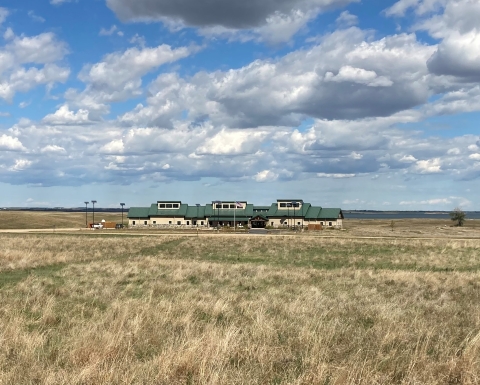Visit Us
Waterfowl Production Areas are part of the National Wildlife Refuge System, a network of lands managed to conserve fish and wildlife and their habitat for the continuing benefit of the American people.
The Audubon Wetland Management District has 84 Waterfowl Production Areas in McLean and Sheridan Counties that provide numerous recreational opportunities for visitors. Waterfowl production areas are open to wildlife-dependent recreational activities, which include hunting, fishing, wildlife observation, photography, environmental education, and interpretation.
Location and Contact Information
About Us
The Wetland Management District includes all U.S. Fish and Wildlife Service interests in McLean and Sheridan Counties. The District was started as part of the Small Wetlands Acquisition Program in the 1950s and is well-known for its wealth of waterfowl-producing potholes and native prairie grasslands. The Headquarters is located at the Audubon National Wildlife Refuge.
What We Do
In the Audubon Wetland Management District, the focus is primarily administration involving the enhancement of wildlife through management of refuge lands and cooperative agreements with private landowners. This includes monitoring and actively managing refuge lands, administration of Fish and Wildlife Service wetland and grassland easements, and coordination with partners and stakeholders.
Our Organization
The U.S. Fish and Wildlife Service manages an unparalleled network of public lands and waters called the National Wildlife Refuge System. With over 565 refuges and wetland management districts spanning the country, this system protects iconic species and provides some of the best wildlife viewing opportunities on Earth.
Our Species
The majestic flights of thousands of waterfowl, sandhill cranes, and shorebirds are visible in the Wetland Management District during spring and fall migration. Endangered whooping cranes are often seen migrating in small groups or with sandhill cranes. Piping plovers, a threatened species, nest in the area each summer. Giant Canada geese, in addition to ducks such as mallards, gadwalls, blue-winged teal, northern pintails, and lesser scaup, are common nesters in the Wetland Management District.
Other birds you may see include northern harriers, marbled godwits, upland sandpipers, western meadowlarks, bobolinks, and more than 200 other species.
Audubon Wetland Management District also provides habitat for wildlife that make the prairie their year-round home. White-tailed deer, coyote, red fox, sharp-tailed grouse, and gray partridge are some of the hardier species that are adapted to North Dakota's climate. The ring-necked pheasant is also a district resident whose numbers often decline during severe winters.







